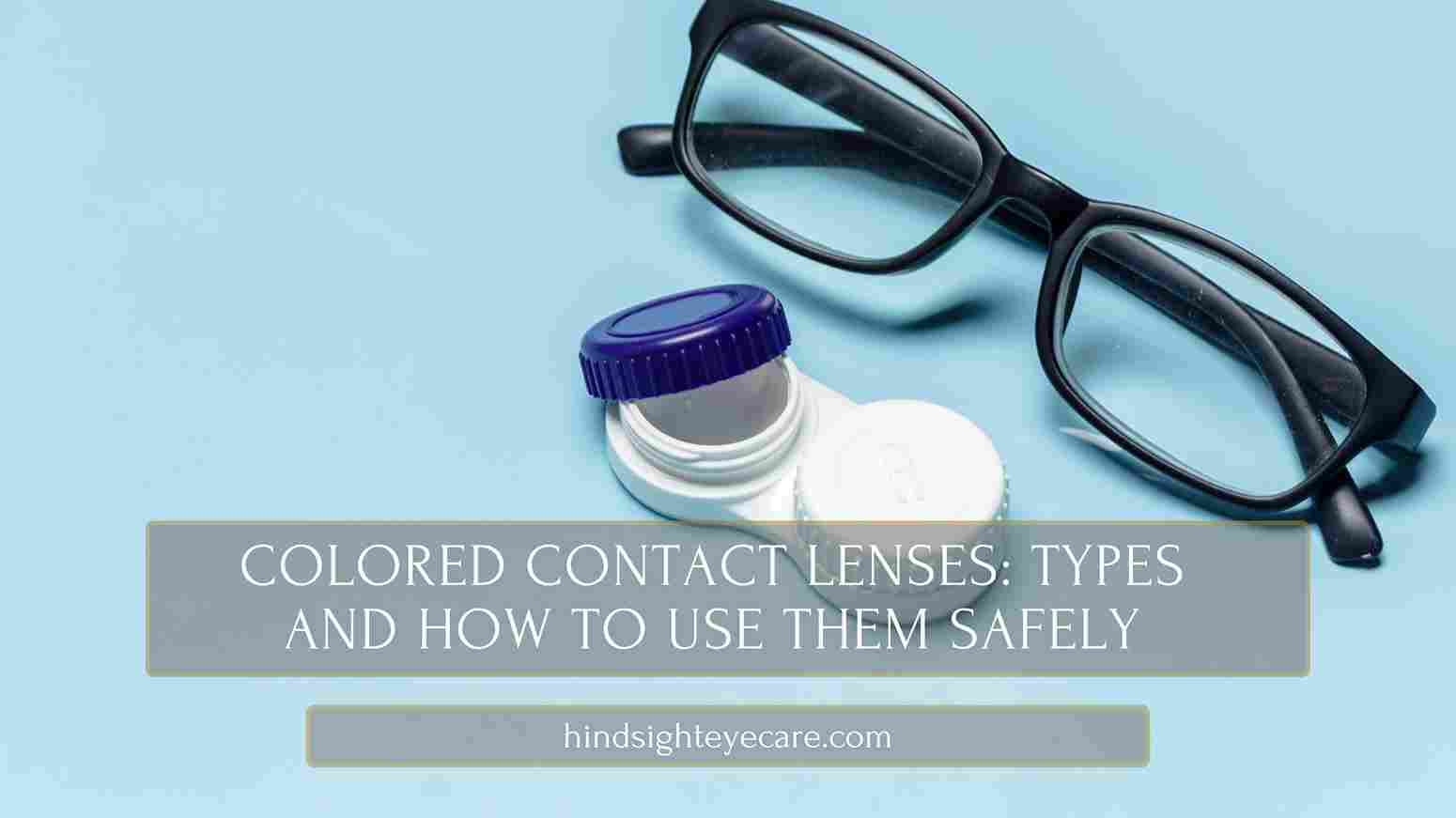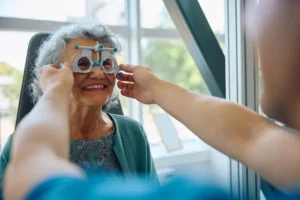Colored Contact Lenses
With the rising popularity of aesthetic enhancements, colored contact lenses have become a top choice for individuals seeking to elevate or transform their look. These lenses come in various colors and designs, enabling wearers to switch their eye color as quickly as their wardrobe. However, selecting the right type and learning to handle them safely is essential for preserving style and eye health.
What Are Colored Contact Lenses?
Colored contact lenses are designed to modify or enhance the appearance of your eye color. Unlike standard clear contacts, they come in various hues and patterns, catering to casual and theatrical preferences. Colored contact lenses: Types and how to use them safely is a key topic for anyone interested in these lenses, as safety practices are critical for ensuring a comfortable experience.
Types of Colored Contact Lenses
Prescription vs. Non-prescription
- Prescription: These lenses are for people who require vision correction and color change simultaneously.
- Non-prescription: Cosmetic lenses without vision correction; available for those looking purely for style.
Types Based on Color
- Enhancement lenses: Boost natural eye color subtly, best for light-colored eyes.
- Opaque lenses: Fully mask the natural color, ideal for dramatic changes.
Types Based on Wear Duration
- Daily disposable: Single-use lenses ideal for occasional wear.
- Monthly wear: Suitable for frequent wearers, with proper maintenance.
Benefits and Drawbacks of Colored Contacts
While colored contact lenses offer an exciting way to enhance or alter one’s appearance, they have advantages and potential downsides. Understanding these can help one make an informed decision.
Benefits
- Aesthetic Enhancement: These lenses allow you to experiment with various looks, from subtle enhancements to bold transformations. With different styles, they cater to various needs, from daily wear to theatrical costumes.
- Convenient and Reversible: Unlike permanent cosmetic options, colored contacts temporarily change your eye color. They are easy to remove whenever you want to return to your natural look.
- Vision Correction (for prescription lenses): Many coloured lenses are available with corrective powers, allowing wearers to enhance eye color while addressing vision issues.
Drawbacks
- Possible Discomfort: Colored lenses may feel slightly thicker than regular contacts, as they contain color pigments. This can sometimes lead to initial discomfort or dryness.
- Higher Cost: Colored contact lenses are generally more expensive than regular lenses due to the additional manufacturing processes.
- Risk of Eye Infections: Poor hygiene or misuse can lead to infections. This is why it’s essential to follow usage instructions strictly.
How to Choose the Right Colored Contacts
When selecting colored contact lenses, consider factors like your natural eye color, skin tone, and the lenses’ purpose.
Consider Your Natural Eye Color
- Light Eyes: People with light-colored eyes have more flexibility in choosing subtle or bold colors, as many shades show up vividly against light irises.
- Dark Eyes: Opaque lenses are recommended for those with darker eyes, as they are designed to fully cover the natural color and provide a dramatic transformation.
Match with Your Skin Tone
- Cool Tones: If you have cool undertones, colors like gray, blue, and green may be flattering.
- Warm Tones: Brown, honey, and hazel tones work well with warmer undertones, offering a natural, harmonious look.
Intended Use
Are the lenses for daily wear or for a special occasion? Answering this question will help determine whether you need a daily disposable, weekly, or monthly lens.
Here you like Nearsightedness (Myopia): Causes, Signs & Treatments
Safe Usage Tips for Colored Contact Lenses
Good habits can go a long way in maintaining eye health while using colored contact lenses.
- Wash Hands Thoroughly: Always wash and dry your hands before handling lenses to avoid introducing bacteria or contaminants to your eyes.
- Avoid Sharing Lenses: Sharing contacts can transfer bacteria or viruses between users, increasing infection risk. Never share your lenses, even if they are purely cosmetic.
- Follow Wearing Time Guidelines: Over-wearing lenses can lead to discomfort or even damage the surface of your eye. Stick to recommended time limits, and avoid sleeping in lenses unless specifically designed for it.
- Replace Lens Solution Daily: Always use fresh contact lens solution each time you store your lenses. Reusing old solution can lead to bacterial growth and eye irritation.
How to Maintain and Store Colored Contacts Properly
Proper storage and cleaning are crucial for both the longevity of your colored contacts and the safety of your eyes.
- Use the Right Solution: Only use the contact lens solution recommended by your eye care professional. Avoid water or saliva, as they are not sterile and may introduce contaminants.
- Clean and Rinse Regularly: Each time you remove your lenses, clean and rinse them thoroughly with a fresh solution. Avoid rubbing lenses too hard, as this could damage the color pigments.
- Store in a Clean Case: Use a designated lens case and replace it every 3-6 months. Clean it regularly with contact lens solution rather than water.
- Avoid Exposure to Water: Keep your lenses away from water, whether it’s from swimming pools, showers, or tap water, as it can harbor harmful microorganisms.
Precautions and Risks to Avoid
When wearing coloured contact lenses, safety should be your priority. Here are some precautions to bear in mind:
- Avoid Unlicensed Sellers: Only purchase lenses from reputable, licensed sellers. Cheap, unregulated lenses can be low-quality and may not meet safety standards.
- Consult an Eye Care Professional: Even if you have perfect vision, consulting an optometrist before using coloured lenses is crucial. They can guide you on proper use, fitting, and maintenance.
- Be Mindful of Eye Irritation: If you experience redness, pain, or excessive watering, remove the lenses immediately. Persistent symptoms may indicate an infection, so consult your doctor if discomfort continues.
- Do Not Sleep in Colored Lenses: Avoid sleeping in them unless the lenses are specifically approved for overnight wear to reduce the risk of infection.
Conclusion
Colored contact lenses offer a unique way to change or enhance your eye color, allowing you to experiment with various looks while enjoying the convenience of a temporary change. However, safe usage and proper care are essential to prevent potential complications.
With the right approach, you can safely enjoy the world of colored lenses, transforming your look whenever you wish. Remember, your eye health should always come first—consulting a professional, practicing good hygiene, and following guidelines can help you make the most out of your colored lenses.
Frequently Asked Questions (FAQs)
Are colored contact lenses safe to use?
Yes, when used correctly and under the guidance of an eye care professional. However, misuse can lead to infections or eye irritation.
Can I wear colored contact lenses if I don’t need vision correction?
Absolutely! Non-prescription colored lenses are widely available for those seeking purely cosmetic changes.
How long can I wear colored contact lenses in a day?
This varies by lens type, but generally, it’s best not to exceed 8-10 hours. Always follow the specific instructions for your lenses.
Do colored lenses work on dark eyes?
Yes, opaque lenses are designed to mask the natural eye color and are highly effective on dark eyes for a vibrant look.
Is it safe to buy colored contact lenses online?
It can be safe if you buy from reputable, licensed sellers. Avoid unregulated sources that may sell substandard or unsafe lenses.




